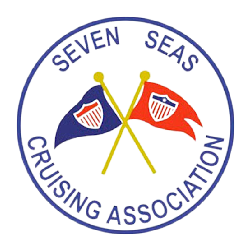Explore Our Latest News & Articles

If I told you that statistics on boats sinking showed that the dock is four times more dangerous than the open waters, you might tell me to check my calculator, amongst other things. But study after study show that four times as many boats sink at the dock than underway! Why is that?
Real-Time Reactions Well, candidly, there are lies, damn lies and statistics. If you are underway and you see water coming up from below, you are going to do something about it right away. Thus, the underway problems are going to be dealt with in real time and the odds are way in your favor that you can save the vessel, even if you have to drive her on to the beach to do so. But why do so many boats sink at their docks? Why didn't the bilge pump save her, to start with? Many people believe "big boat, big bilge pump. Little boat, little bilge pump." Wrong! Big boat, LOTS of bilge pumps. Little boat, BIG bilge pump. You need to get the water OUT of your 17' Seahunt as fast as possible. 500 gallons per minute isn't half as good as 1,000 GPM. It is less than half as good because, once she goes down, no bilge pump can re-float her. And experts estimate that it costs 40% of the original value of the boat to re-wire her and restore the engine. Oh, and throw out the radio, GPS and fish finder. So, your $20,000 17' Seahunt will cost you as much as $8,000 to repair/restore versus the $200 1,000 GPM bilge pump. Is she worth that much today?
Buying Time And remember, bilge pumps don't save boats. They buy you time. Time from what? Well, again, the statistics say that boats sink at the dock for 2 major reasons. Half the time, a thru-hull fitting gives up the ghost and water eventually overwhelms the battery/bilge pump arrangement. So, check the thru-hulls with every lay-up. And check the screws around them. If the screws "rot*" away, it is another source of water to enter that isn't so obvious. But it will add up.
The second most common source of sinking at the dock is snow and rain (30%). I had one happen to one of my boats because the self-bailing scuppers clogged from leaves. Rain followed – and followed – and followed – until I had a submarine. Also, many skippers believe that biminis and canvas covers prevent water from entering the boat. Wrong again. They slow it but don't stop it. In the winter, stow them someplace dry and shrink-wrap the boat. So, over 80% of the boats sink for two reasons – all of which adds up to checking the boat from time to time. Or paying the dock hand to – or your teenager that wants some extra spending money to go with his or her new driver's license – but check it. Would you leave a box with $20,000 unattended on your lawn for months at a time?
So, if 4 out of 5 boats sink at the dock, what about that other boat? Well, that is a story for another time – and soon.
As a side note, marine screws don't rot. They get eaten away by electrical charges in the water. This is due to poor "galvanic isolation". More on that in the weeks ahead!
If you have questions on this column or you are interested in being part of USCG Forces, email me at [email protected] or go directly to the US Coast Guard Auxiliary "Flotilla Finder" at http://www.cgaux.org/units.php and we will help you "get in this thing."












